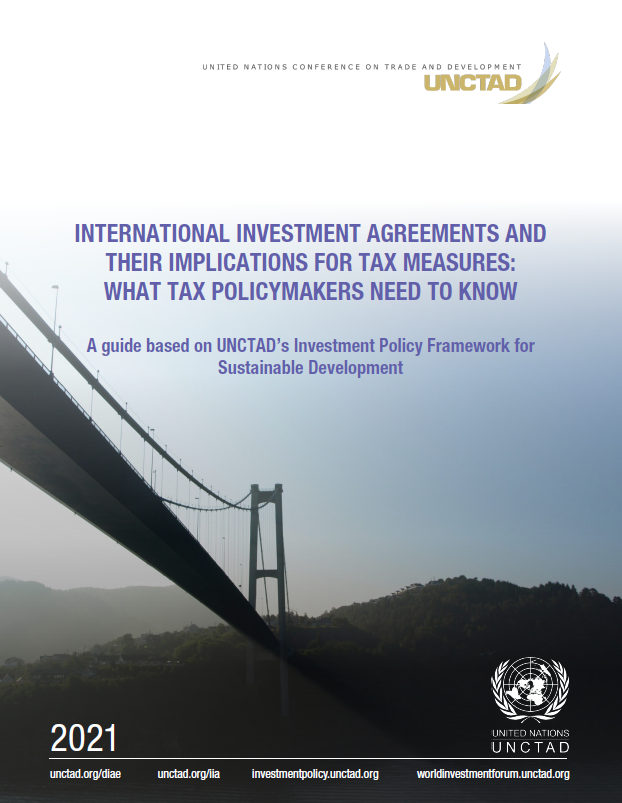International Investment Agreements and Their Implications for Tax Measures
This guide for tax policymakers on international investment agreements (IIAs) and their implications for tax measures was produced by UNCTAD’s Division on Investment and Enterprise in cooperation with the WU Global Tax Policy Center of the Vienna University of Economics and Business, Institute for Austrian and International Tax Law.
It analyses the most relevant IIA provisions regarding their implications for tax measures: fair and equitable treatment, indirect expropriation, and other selected provisions encountered in the existing stock of over 3,000 IIAs.
IIAs contain obligations for States and can interact with regulatory action in the field of tax aimed to raise revenue, eliminate double taxation or limit opportunities to engage in tax avoidance or evasion. To address potential risks for tax legislation or practices, this guide also suggests options to reform IIA provisions based on UNCTAD’s Investment Policy Framework for Sustainable Development (2015) and its most recent reform toolkit, the IIA Reform Accelerator (2020).
What do tax policymakers need to know about IIAs?
IIAs can expose States to claims brought under IIAs’ investor–State arbitration mechanism, known as investor–State dispute settlement (ISDS). Most IIAs do not exclude taxation from their scope, which means that a wide range of tax-related measures are covered by them. UNCTAD data suggests that in some 140 ISDS cases investors have challenged various types of tax-related measures.
Broad consensus exists in the investment policymaking community on the need to reform the IIA regime. This reform is well underway. New approaches to IIAs and modernized IIA provisions are being pursued across various country groupings, by countries at different levels of development and from different geographical regions.
This guide seeks to stimulate the interaction between tax policymakers and IIA negotiators. The joint expertise of these two policy communities could help accelerate the IIA reform process and increase the coherence between tax and investment policymaking.
















